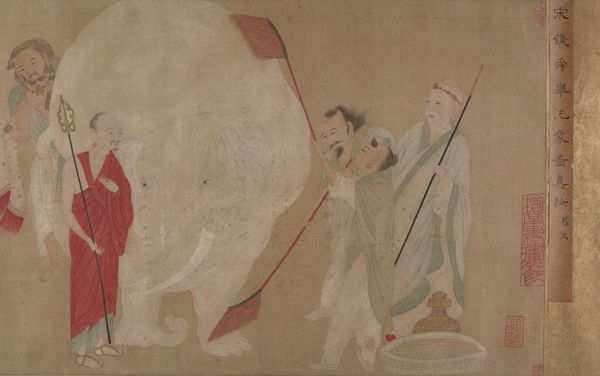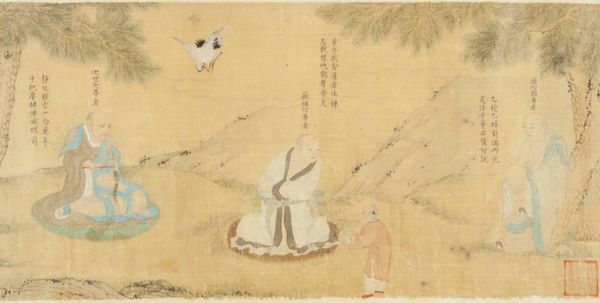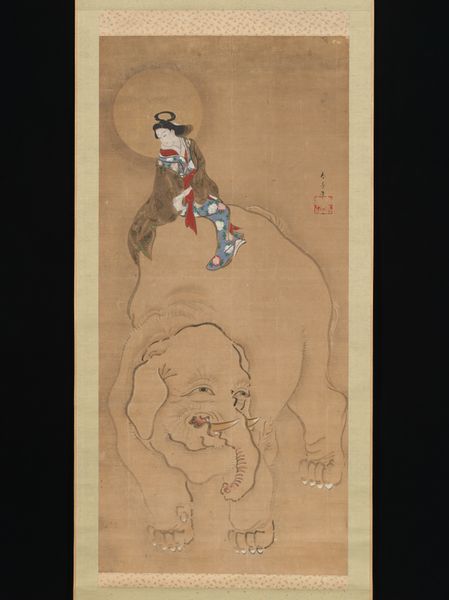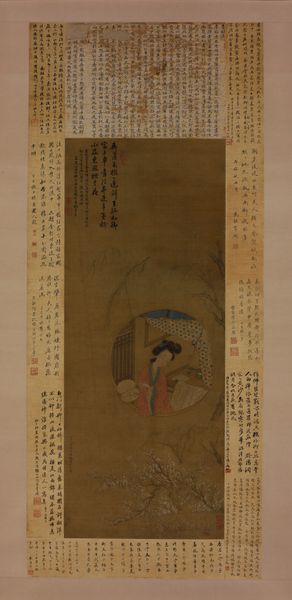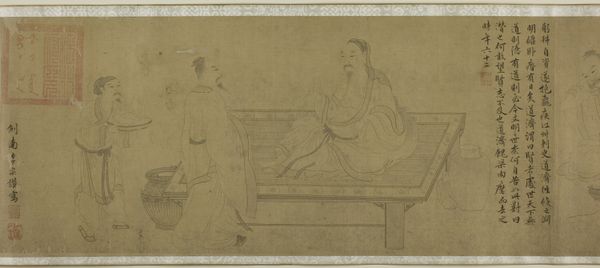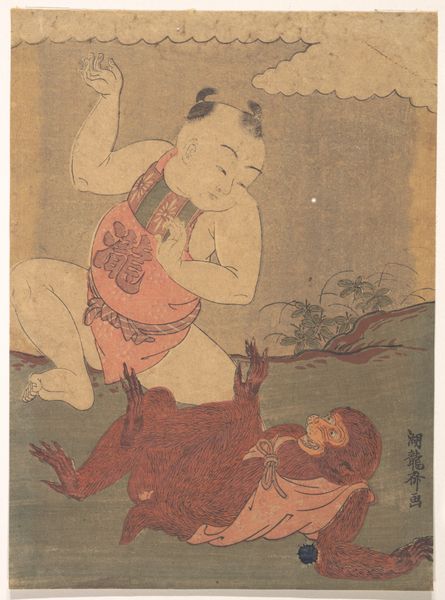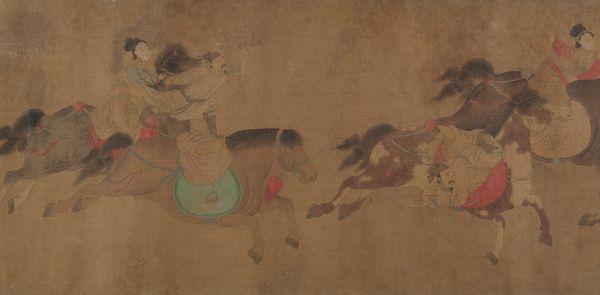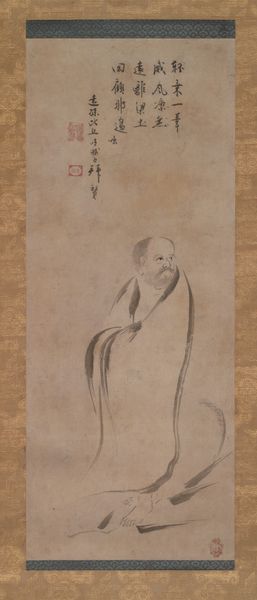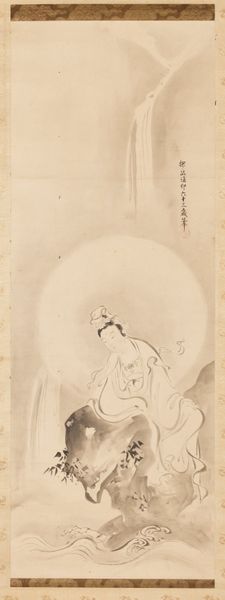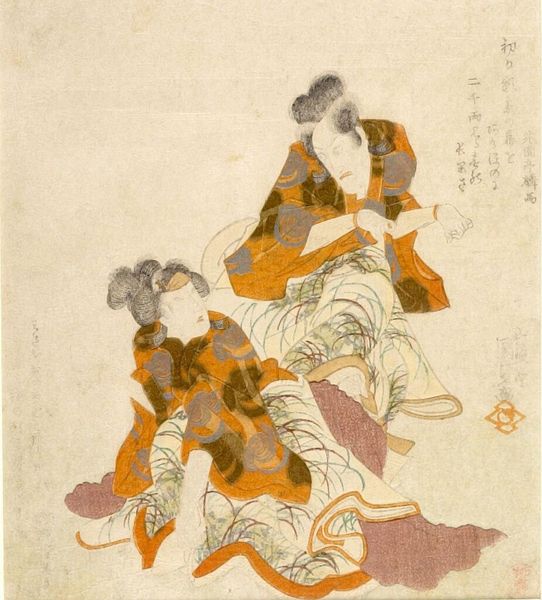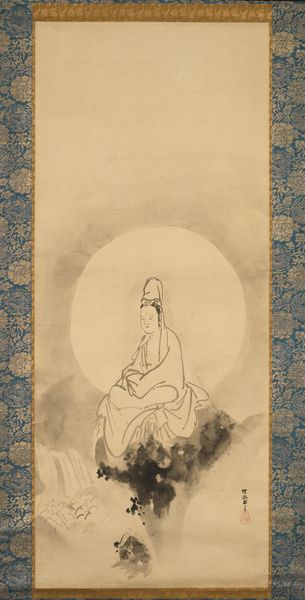
Washing the White Elephant Ming dynasty (1369–1644), late 16th century
0:00
0:00
tempera, painting, paper, ink
#
tempera
#
painting
#
asian-art
#
landscape
#
paper
#
ink
Dimensions: 14 3/8 × 17 in.
Copyright: Public Domain
Editor: Here we have Chang Shêng-yu's "Washing the White Elephant," a late 16th-century ink and tempera on paper piece. The colors are so muted, almost faded, giving it a dreamlike quality. It's hard to get a grasp of what’s happening, it feels more symbolic. What strikes you when you look at this, in terms of its iconography? Curator: Indeed, it's fascinating how the imagery speaks to layers of meaning beyond the immediately visible. What do you see when you consider the white elephant itself? Editor: Well, it’s enormous, almost taking up the entire composition. I’m guessing that white elephants are meaningful in some traditions? Curator: Precisely. The white elephant is often associated with purity, gentleness, and wisdom, particularly in Buddhist iconography, acting as a symbol for royalty, fertility, and the Bodhisattva ideal. Its prominence here signals its profound importance. The act of washing implies purification, cleansing of the spirit. What of the figures surrounding the elephant? What roles might they play? Editor: I see figures who seem to be attendants or caretakers; they seem to be performing a ritual. So, washing the elephant symbolizes...spiritual cleansing of the self? Or the state? Curator: Perhaps both. Remember, cultural symbols can operate on multiple levels simultaneously. The Ming dynasty saw a resurgence of interest in Buddhism, and this painting perhaps reflects that. Beyond just individual enlightenment, think about the emperor's role, seeking purification and wisdom to rule justly. How might understanding these symbols alter your initial reaction to the artwork? Editor: It moves it away from simply dreamlike, into a purposeful vision – a ritualistic display of power, belief, and cultural identity. Thanks for illuminating all the symbolism! Curator: A pleasure. It’s amazing how delving into the layers of imagery can deepen our understanding and appreciation for art's ability to carry cultural memory across time.
Comments
No comments
Be the first to comment and join the conversation on the ultimate creative platform.
